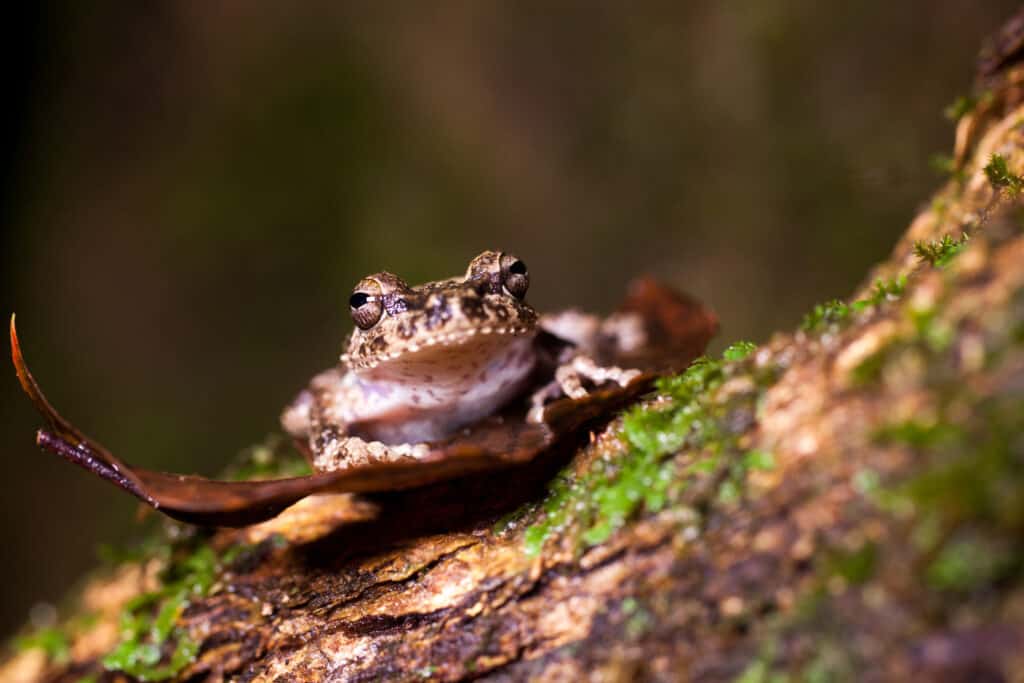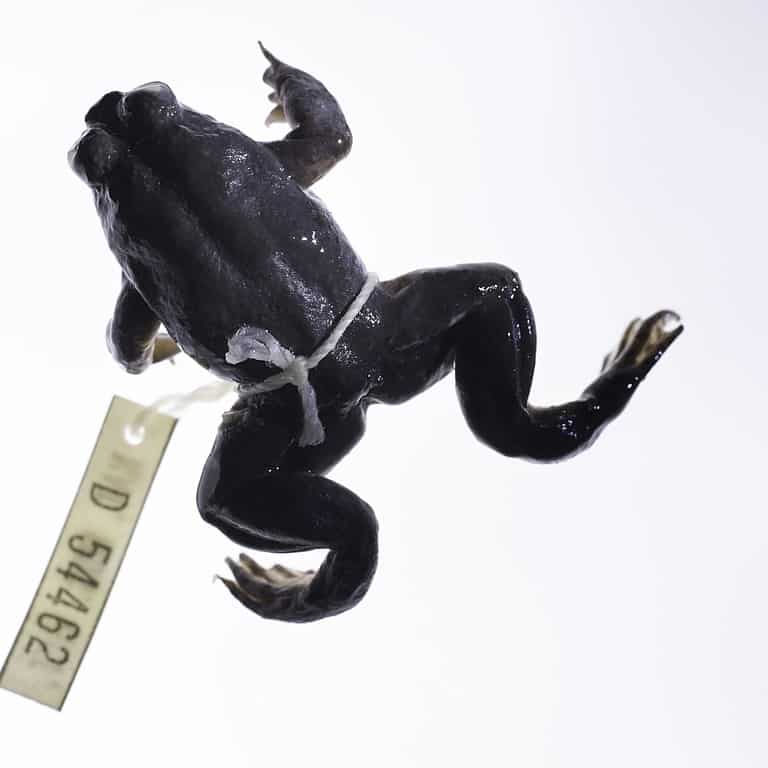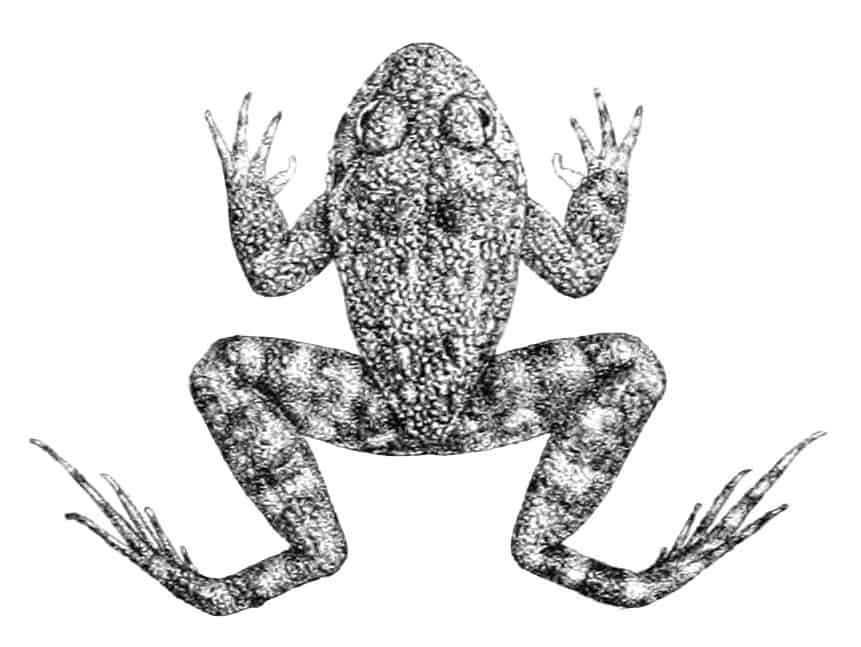Since prehistoric times, more than half of the animals that previously coexisted with humans have vanished from the earth. Like dinosaurs, amphibians are currently seriously threatened by extinction. The frog population has been declining everywhere, from the wind-whipped Rocky Mountains of the United States to the unspoiled rainforests of South America; from the chilly Andean highlands to the tropical forests of Australia; even in temperate Europe. This begs the question: what types of frogs have gone extinct?
Frogs have moist, porous skin that allows them to breathe and absorb water. Because of the fragility of their skin, they are extremely vulnerable to pathogens and toxins that can be absorbed directly. Scientists believe they are helpful indicators of the planet’s quality and natural world changes. Despite the amazing diversity of these tail-less creatures, many of the species, unfortunately, live in environments that are becoming more and more hostile. With that in mind, the drop in their population may also signify what is to come for humans. This article will look into 26 extinct types of frogs and other interesting facts.
Extinct Types of Frogs
1. Sri Lanka Shrub Frog (Pseudophilautus Pardus)

Some species of the Sri Lankan shrub frog still exist but are in grave danger.
©Aleksandar Kamasi/Shutterstock.com
There are several species of shrub frogs (genus Pseudophilautus) from A (Pseudophilautus adspersus) to Z (Pseudophilautus zimmeri) that have recently become extinct. These species were previously indigenous to Sri Lanka, and south of India and are likely extinct due to urbanization and illness. Some species of the Sri Lankan shrub frog still exist but are in grave danger, just like the harlequin toad.
The Latinized form of the Greek word pardos, which means “leopard,” is used as the particular name for this species, pardus, because of its leopard-like coloring. The length from snout to vent of the holotype is 32 mm (1.3 in). The toes are webbed, the body is bulky, and the tympanum is shaped like an oval. The dorsum contains numerous dark-brown dots, some of which unite to form larger blotches, and it’s yellowish-brown while the underside has a consistent color.
2. Southern Gastric-Brooding Frog (Rheobatrachus silus)

The last of the gastric-brooding frog species perished in 1983.
©Benjamin Healley / CC BY 4.0 – License
The gastric-brooding frogs are a genus of extinct ground-dwelling frogs native to Queensland in eastern Australia and are also known as the platypus frog. They were found in 1972, and the last of their members living in captivity perished in 1983. The southern gastric-brooding frog was a medium-sized species with bland coloring, large protruding eyes set closely together, and a short, blunt snout. The toes were completely webbed, whereas the fingers were long, slender, sharp, and unwebbed. Concerning the body, the arms and legs were big, and females were larger than males.
This Australian frog was unique because it swallowed its freshly fertilized eggs, and the tadpoles matured in the security of their mom’s stomach before emerging out of her esophagus. To prevent her hatchlings from being burned to death by stomach acid discharges, the mother gastric-brooding frog avoided eating during this time.
3. Vegas Valley Leopard Frog (Lithobates fisheri)
The Las Vegas Valley and Tule Springs in Clark County, southern Nevada, once hosted the Vegas Valley leopard frog, which lived at 370 to 760 meters (1,210 to 2,490 ft) elevations. It was presumed to be the only native frog in the United States that went extinct in the modern era.
A TV crime drama set in Vegas would be proud of the plot twist surrounding the extinction of the Vegas Valley leopard frog. The last known specimens were collected in Nevada in the early 1940s, and the lack of sightings ever since led naturalists to declare it extinct. Then a miracle happened: after studying the DNA of preserved samples of Vegas Valley leopard frogs, researchers found their genetic makeup was the same as that of the still-existing Chiricahua leopard frog. After rising from the dead, the Vegas Valley leopard frog has simply taken on a new identity.
4. Gunther’s Streamlined Frog (Nannophrys guentheri)

The Günther’s streamlined frog had a short but highly prominent web at the base, while the tips of the fingers were pointed.
©R. Mintern / public domain – License
Since the initial specimens were gathered in 1882, Günther’s streamlined frog, a Sri Lankan frog species, has not been seen in the wilderness. Even though it is unremarkable, Günther’s streamlined frog serves as a suitable metaphor for the numerous amphibians at risk of extinction worldwide but are too uninteresting to be labeled “golden.” However, they are still a significant element of our planet’s ecosystem.
Behind the choanae (inside the nostrils) were two hazy sets of vomerine teeth, and its head was quite tiny and not bony. The toes had a short but highly prominent web at the base, while the tips of the fingers were pointed. This frog’s upper region was brown and marbled with a darker color. Small light dots could be seen on the top lip, the sides of the body, and the limbs. The frog’s underside was consistently pale, and males had two internal vocal sacs.
5. Mount Glorious Day Frog (Taudactylus diurnus)
South-east Queensland was home to this extinct species of frog known as the Mount Glorious day frog, often referred to as the Mount Glorious torrent frog or southern day frog. Since it hadn’t been observed in the wild since 1979, it was declared extinct.
The size of the Mount Glorious day frogs ranged from 22.0 to 30.6 mm. Males typically measured 22.0 to 27.2 mm in length, and females were significantly larger, measuring 23.3 to 30.6 mm. The dorsal skin was mostly smooth with some granular texture and had a gray or brown tone with dark streaks or spots. With sporadic gray patches, the abdomen skin was a creamy white or bluish-gray color.
6. Splendid Poison Frog (Oophaga speciosa)

The splendid poison frog was considered extinct in 2020.
©Agustin Herrera C/Shutterstock.com
The splendid poison frog is an extinct poison dart frog species native to Panama, where it was only found in a tiny geographic area along the western Cordillera Central, adjacent to Costa Rica. Its native habitats were humid lowland and montane forests. The species was once widespread, but since it was unclear how its population was faring, it was considered extinct in 2020.
7. Spiny-Knee Leaf Frog (Phrynomedusa fimbriata)
The spiny-knee leaf frog is a presumably extinct type of tree frog, and it was indigenous to Brazil, where the solitary known specimen was found close to Paranapiacaba in Sao Paulo. Despite only having been discovered once in 1898, the species may still exist today, but no evidence of any living individuals has been found in subsequent expeditions.
The holotype of this species, a mature female measuring 46 mm (1.8 in) from snout to vent, is the only specimen available. It was dorsally pale blue and ventrally reddish yellow at the time of species classification.
8. Craugastor Myllomyllon
Craugastor myllomyllon in the Craugastoridae family has become extinct. It was unique to Guatemala, and only one specimen of it is known.
The holotype is a juvenile female with a snout-vent length of 30 mm (1.2 in). The toe discs are a little bit larger than those on the fingers, and the fingers have lateral keels and slightly expanded discs.
9. Corquin Robber Frog (Craugastor anciano)
Corquin Robber Frog was a species of frog in the family Craugastoridae, and the Cordillera de Celaque in Honduras was home to this species. Its native habitats were premontane and lower montane forests with high humidity levels, and it resided on the ground along long streams. This exceptionally uncommon species is now thought to be extinct. Although habitat degradation may also have played a role, chytridiomycosis is one potential cause.
10. Sierra de Omoa Streamside Frog (Craugastor omoaensis)
The Sierra de Omoa Streamside Frog is one of 13 amphibians and reptiles unique to the Sierra de Omoa and endemic to Honduras. Its native habitats include sporadic rivers and subtropical or tropical wet montane forests. With no sightings since 2004, the species was declared extinct in 2019.
A Complete List of Extinct Types of Frog
Frogs are under threat, and habitat loss is the major factor in this decline. Frog species are declining for the same reason that most other animal species go extinct: a lack of a healthy environment.
Below, you’ll find a complete list of the frog species that are already extinct.
- Corquin robber frog (Craugastor anciano)
- Craugastor myllomyllon
- Sierra de Omoa streamside frog (Craugastor omoaensis)
- Vegas Valley leopard frog (Lithobates fisheri)
- Gunther’s streamlined frog (Nannophrys guentheri)
- Splendid poison frog(Oophaga speciosa)
- Spiny-knee leaf frog (Phrynomedusa fimbriata)
- Sri Lanka bubble-nest frog (Pseudophilautus adsperus)
- Pseudophilautus dimbullae
- Pseudophilautus eximius
- Pseudophilautus extirpo
- Pseudophilautus halyi
- Whitenose bubble-nest frog (Pseudophilautus leucorhinchus)
- Pseudophilautus maia
- Pseudophilautus malcolmsmithi
- Pseudophilautus nanus
- Sharp-nosed bush frog (Pseudophilautus nasutus)
- Pseudophilautus oxyrhynchus
- Pseudophilautus pardus
- Pseudophilautus rugatus
- Pseudophilautus temporalis
- Variable bush frog (Pseudophilautus variabilis)
- Pseudophilautus zal
- Pseudophilautus zimmeri
- Southern gastric-brooding frog (Rheobatrachus silus)
- Mount Glorious day frog (Taudactylus diurnus)
The photo featured at the top of this post is © Agustin Herrera C/Shutterstock.com
Thank you for reading! Have some feedback for us? Contact the AZ Animals editorial team.






